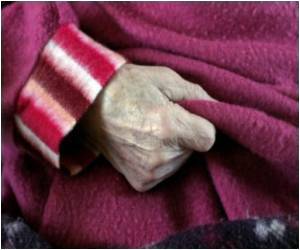Higher risk of overdose in young adults being treated with benzodiazepines compared to other sleeping drugs.
- Insomnia is a disorder where a person experiences lack of sleep or inadequate sleep
- There is a rise in incidence of insomnia among teens and young adults
- Medication prescribed for insomnia like Xanax (benzodiazepines) have the potential to be highly addictive
Age, Period, and Cohort Effects of Internalizing Symptoms Among US Students and the Influence of Self-Reported Frequency of Attaining 7 or More Hours of Sleep: Results From the Monitoring the Future Survey 1991-2019
Go to source). Insomnia is associated with negative health consequences. Nonpharmacologic and pharmacologic treatments for insomnia are available, with cognitive behavioral therapy frequently recommended as first-line treatment (2✔ ✔Trusted Source
Comparative effectiveness and safety of pharmacological and non-pharmacological interventions for insomnia: an overview of reviews
Go to source).
FDA requiring Boxed Warning updated to improve safe use of benzodiazepine drug class
Go to source).
The risk of overdose increases when benzodiazepines are used in combination with opioids and other central nervous system depressants, benzodiazepine attributed morbidity and mortality have increased since the onset of the prescription opioid epidemic (4✔ ✔Trusted Source
Increasing Benzodiazepine Prescriptions and Overdose Mortality in the United States, 1996-2013
Go to source).
The study examined how often young people with sleep disorders had a drug overdose in the months after starting a prescription sleep medication.
Deaths by Overdose of Benzodiazepines
Benzodiazepines were involved in 12,290 overdose deaths in 2020, up from 6,872 in 2011 and 1,135 in 1999 (5✔ ✔Trusted SourceOverdose Death Rates
Go to source). However, researchers said the risks of drug overdose in youth populations prescribed a benzodiazepine treatment for insomnia was unclear and inconclusive. It was found that young people using benzodiazepines for common sleep conditions had an increased risk of overdose during the six months after starting treatment compared with other prescription sleep medications, including trazodone, hydroxyzine and z-hypnotics (6✔ ✔Trusted Source
Association of Benzodiazepine Treatment for Sleep Disorders With Drug Overdose Risk Among Young People
Go to source).
“The risk of drug overdose with benzodiazepine treatment is an important safety consideration when treating adolescents and young adults. We hope these results can inform prescribing decisions and encourage close monitoring in this young patient population.” said researchers.
Using a commercial claims database covering privately insured young people ages 10 to 29 years old, researchers identified nearly 90,000 people newly receiving benzodiazepine or an alternative prescription treatment for a sleep disorder. Researchers then examined drug overdoses in this group in the six months following the start of treatment.
Given the frequent co-use of benzodiazepines with other substances, it is important to discuss with young people the potential associated harms. Because other substance use may be unknown to the prescriber, adolescents and young adults should be screened for substance use and a history of overdoses before treatment.
References:
- Age, Period, and Cohort Effects of Internalizing Symptoms Among US Students and the Influence of Self-Reported Frequency of Attaining 7 or More Hours of Sleep: Results From the Monitoring the Future Survey 1991-2019 - (https://pubmed.ncbi.nlm.nih.gov/35048117/)
- Comparative effectiveness and safety of pharmacological and non-pharmacological interventions for insomnia: an overview of reviews - (https://systematicreviewsjournal.biomedcentral.com/articles/10.1186/s13643-019-1163-9)
- FDA requiring Boxed Warning updated to improve safe use of benzodiazepine drug class - (https://www.fda.gov/drugs/drug-safety-and-availability/fda-requiring-boxed-warning-updated-improve-safe-use-benzodiazepine-drug-class)
- Increasing Benzodiazepine Prescriptions and Overdose Mortality in the United States, 1996–2013 - (https://www.ncbi.nlm.nih.gov/pmc/articles/PMC4816010/)
- Overdose Death Rates - (https://nida.nih.gov/research-topics/trends-statistics/overdose-death-rates)
- Association of Benzodiazepine Treatment for Sleep Disorders With Drug Overdose Risk Among Young People - (https://jamanetwork.com/journals/jamanetworkopen/fullarticle/2798875)
Source-Medindia










